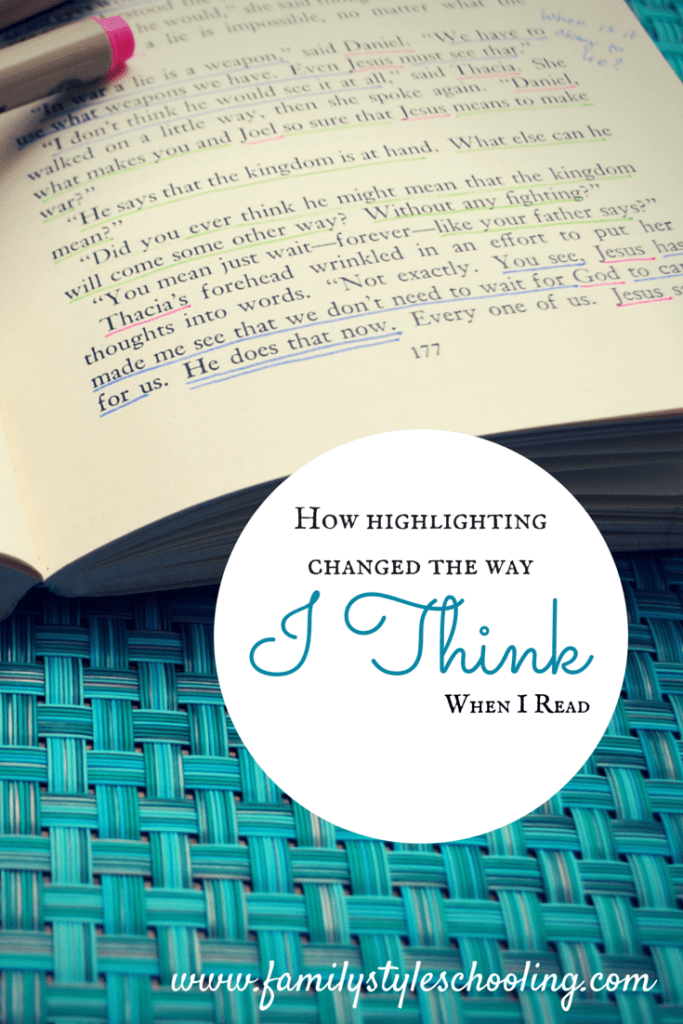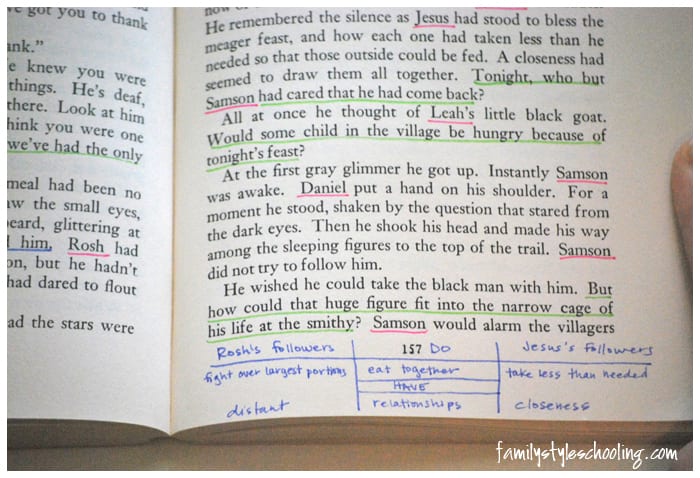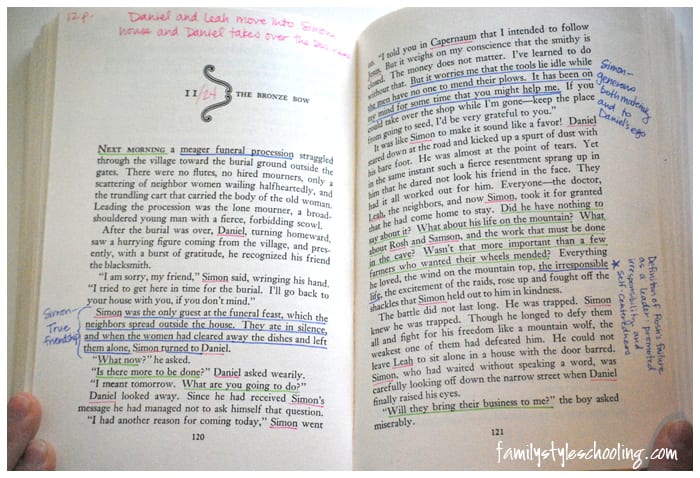How Highlighting Changed the Way I Think When I Read
Last year, while tutoring Challenge A, one of the greatest tools I learned was Andrew Kern's highlighting system. It is a color coded process for marking books. Recently, Sarah Mackenzie hosted a webinar where Andrew taught her about the system. It is worth a watch.
For those of you who are skeptics about marking in books, consider this quote from Mortimer Adler's "How to Mark a Book":
The soul of a book "can" be separate from its body. A book is more like the score of a piece of music than it is like a painting. No great musician confuses a symphony with the printed sheets of music. Arturo Toscanini reveres Brahms, but Toscanini's score of the G minor Symphony is so thoroughly marked up that no one but the maestro himself can read it. The reason why a great conductor makes notations on his musical scores -- marks them up again and again each time he returns to study them--is the reason why you should mark your books. If your respect for magnificent binding or typography gets in the way, buy yourself a cheap edition and pay your respects to the author.
At a young age my father taught me the benefits to marking in my Bible. Transferring this skill to the books I read, I would make pencil notations in the margins. However when I came across a difficult book, I found that I didn't know what was important to mark, or even how to go about gaining understanding of the text. While I haven't implemented the system just like Andrew, the beauty is that it has changed how I read, because my mind is constantly searching for answers to some really simple questions.
First, I look for names, dates, key terms, and I underline in pink. (I've decided that highlighters are too intense for me, and I like how the underlines turn out). What I'm really thinking about are questions like:
- Who is this chapter about?
- When did the events happen?
- Are there any important words?
After I've read the chapter, I sum up the chapter, or give it a title.
Next, I look for questions or lists. Some also include scene changes for their green markings, but I haven't mastered that element yet, so I stick with what I know. While I read I find my self thinking:
- Why did they ask that question?
- Was there an answer to the question?
- (In the Bronze Bow specifically) Why does Jesus often speak in question form?
- Is there a list to pay attention to?
- Why did they include some items in a list and not others?
I also take time to note any of the Five Common Topics of Invention that come to mind as I read. These notes serve to propel conversation when I get together with anyone to discuss the book.
Lastly, I pay attention to what I enjoy - or what I feel is important to the character or plot. This is my favorite part, and I might be too blue happy in some books. If that happens, I add yellow to differentiate between the best of the best. After I've read the book, the blues would be the quotes I want to copy down in my commonplace book, or bring to class to share as we discuss. The questions that arise with blues are:
- Is this important to the development of a character?
- Does this idea mirror a Biblical truth?
- Does this inspire me to change the way I act or think?
I usually find my books used, so I don't mind marking them up as much. I also make sure that my son has his own copy to mark up. It might seem wasteful, but Renee Mathis' post On Wrecking Books to Bring Them To Life was very convincing on the cost of cultivating a love of thinking readers.
It is definitely a slower way to read a book, but fast isn't always better. In the end, after highlighting this way, I feel I have a greater grasp of the content, and I am more eager to get together and discuss because I actually have something to say!

Betsy Strauss is an unexpected homeschooler, mother of three, who is in a relationship with a sweet man for life. She loves reading books, drinking coffee, and learning anything with her kids.






[…] This allows me to contemplate and work on memorizing all at once. Now I just write down the best of my blues that I have […]
Thank you for writing this blog about marking up books. I, at least for long as I remember have been taught not to mark up books. What I have ended up with is a lot of nice looking books, but with story lines, plots, and characters I do not remember. I cannot just go browse through the book, look at my notes and have the story come to life again, because there isn’t any notes there. I went through college and didn’t need to start out in remedial reading, but if I had I would have learned how to annotate, underline (or highlight), and summarize what I was reading. I found this out when I started scribbling for a student, who is taking one of these reading classes. I have wondered how much I would remember from my textbooks if I had done this throughout my college career. Thank you again for this excellent blog, and visuals.
You’re welcome! It’s so funny how much we think we’ll be able to remember. That’s cool to know that they’re teaching this in remedial reading.
Hello Betsy! I’ve tired the link to Sarah’s Mackenzie webinar and it’s not available. Are you aware of another way I can view her webinar? Andrew Kern highlighting system link also is not working. If you can help with this I will greatly appreciate it. Thank you!
I just updated the links! Thanks for letting me know! Happy highlighting 🙂
What happens when you make a highlighting mistake??
Since you’re not working to have a perfectly highlighted book, you don’t have to worry about getting a color wrong or highlighting the wrong thing. It will be okay. If you’re worried, practice on a book that you wouldn’t mind messing up in. I also like to start with underlining with colored pencils instead of using neon highlighters. This way if I do accidentally underline something in the wrong color, it isn’t as annoying!